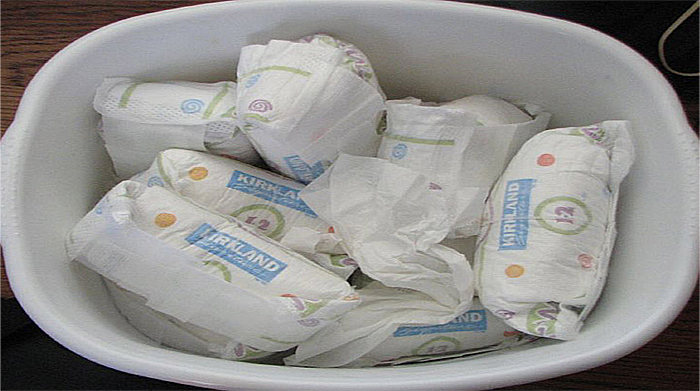Why Your Restoration Plan is Like a Dirty Diaper

The other day I was babysitting my 2-year old grandson when he yelled from across the room that he had a problem. Well, by the time he was within 10 feet of me, I knew exactly what the problem was! So like a good grandma, I moved swiftly into action. And that’s when it hit me – poop diapers are a lot like an emergency restoration plan!
Ok, granted, this is a pretty sick association to make but if you think about it, it’s true. Like diapers, most emergency restoration plans, sooner or later, if left unattended, become filled with crap. And stink. Why? Because the information contained within these plans is static, yet the overall internal and external environments upon which they were developed are constantly evolving. Therefore, some level of effort is needed to keep the information within the plan updated, but doing so in the face of an accelerating pace of change is a daunting task and therefore some utilities do not do it as often as they should. And when the information within the plan becomes outdated, it’s about as useful as a pile of poop.
What About the Restoration Plan should to Change?
Organizations don’t stand still. Contact names, phone numbers and email addresses all may have changed since the initial development of the plan. If storm employees – especially second role employees – don’t know who to contact or how, it’s tough for restoration efforts to be effective and efficient. Of course, technology is also changing at an incredible pace, and your restoration plan must keep up. Technological advancements can impact many elements of the plan, for example:
- Customer communications – social media and smart phone ubiquity
- Security – cybersecurity and hack prevention
- Dispatching – enhanced OMS and mobile workforce connectivity
Processes are also prone to change. Post-storm debriefs or the results of drills may have led to the identification of new and better ways of doing things. Standard operating procedures (SOPs), which outline expectations and establish standards and protocols, are also likely to evolve over time. In fact, SOPs that have not been reviewed in the past 5 years are probably extremely outdated, which is only marginally better than having no SOPs at all.
The relationship and degree of collaboration between your company and external parties like mobile network providers, regulators and utility companies in other sectors is probably evolving as well, and therefore the information in the plan around these interfaces is usually a prime candidate for a fresh look. For example, because of utilities’ increasing reliance on mobile networks, it is more critical now than ever before to make sure some mobile network redundancy is built into the plan (i.e., “Plan B” when the Verizon network on which your OMS platform relies upon goes offline).
Even the form and format of plans can become outdated over time. If your plan only exists in a physical binder sitting on a shelf somewhere, it’s outdated. The plan should be digitized by uploading it onto CDs, thumb drives and the company intranet – and employees should receive instructions on how to access a copy – so that it is easily accessible from anywhere, anytime. If the plan already exists on a variety of digital mediums, it’s always a good idea to check and make sure all mediums have the most updated version.
How to Change the Restoration Plan
Whoa, Nellie, slow down there! As much as I’d like to, it is literally impossible for me to make specific recommendations around how to execute change within your organization. Every organization has its own culture, nuances and idiosyncrasies, and therefore what works well for one utility may not work as well for another.
That said, some generalizations can be made. Here’s a less than comprehensive list (food for thought, if you will):
- Point person – a specific individual should be charged with, and held accountable for, keeping the plan up to date. Someone needs to drive the process.
- Documentation – any recommendation for a change to the plan must be accompanied by evidence that the change is necessary. This could include debrief notes, third-party data, best practices, case studies, your own analysis, or anything else that demonstrates the need and justifies the recommendation.
- Consensus-building – involve key stakeholders in the development of the recommended changes. Encourage participation and obtain approval signoffs. This will not only improve the recommendations, it will also help ensure an optimal level of consensus and buy-in.
- Socialization – socialize the plan both internally and externally so everyone is on the same page and has the same expectations.
- Training – if no one understands or follows the plan, it might as well not even exist. Employees must be regularly trained on the emergency restoration plan. And I’m not just talking about the occasional tabletop exercise…although this is a good start, it’s not enough. Regularly scheduled “full functional” exercises should be designed and executed to test processes and protocols in the context of a 100-year storm scenario.
Bottom Line
Nothing in life is meant to stay stagnant – it’s just not how nature works. And an emergency restoration plan is certainly no different. A plan that gathers dust on the shelf or goes ignored will lead to poor decisions and inefficient workflows. A commitment to reviewing the plan annually for any changes that need to be made is critical. If not, sooner or later you’ll be left with one big, festering pile of crap.

